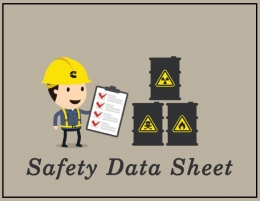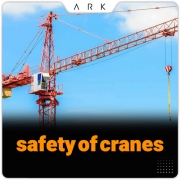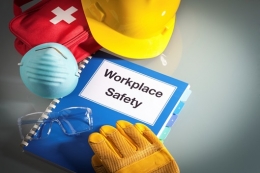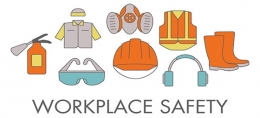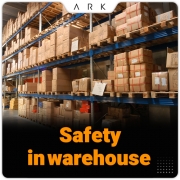Close
Safety Data Sheets
As mentioned in the site`s article on the "Hazards That Threaten People's Lives in the Workplace", one of the most common hazards is the hazards of chemicals. In recent years, one of the solutions offered to reduce the damage caused by chemicals has been material safety information. In this regard, manufacturers were required to provide safety and health information for their products. That`s why material safety data sheets were created. One of the most important issues in the development of material safety data sheets has been the discussion of the Right to Know Act. This law, which has been implemented in many countries, outlines that everyone has the right to know what kind of substance and what side effects and harms they are dealing with in the workplace. To this end, safety data sheets were considered as a very convenient way to convey material safety and health information to people.

SDS or MSDS
Safety Data Sheets, also known as Material Safety Data Sheets or Product Safety Data Sheets, are documents that contain information such as physical properties (such as boiling point, freezing point, flammability point), toxicity, health effects, first aid, reactivity, storage method, protective equipment requirements, necessary measures in case of leakage, etc. Preparing and installing material safety data sheets in the workplace is a good way to provide material safety information. There have been different formats for MSDS for a long time, these formats were different from country to country and even in some cases from organization to organization. This led to the standardization of material safety information format, so SDSs were created.
SDS and MSDS are two words that are often used interchangeably. MSDSs are the SDSs that were called before the creation of the Harmonized System for the classification and labeling of chemicals. The small difference between MSDSs and SDSs is due to the presentation format. With the creation of the Globally Harmonized System (GHS), SDSs, which are a standardized format consisting of 16 sections, replaced MSDSs in providing material safety information. In this format, risk expressions, safety expressions, and visual symbols are used to provide information. SDSs usually consist of several pages. In contrast, MSDSs do not have a mandatory format, do not have a standard wording, and can vary in quality of content.
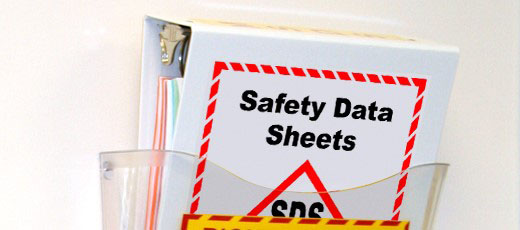
Using MSDS is necessary for three groups of people:
1- Workers who are exposed to chemicals in the workplace.
2- Workers who need to be aware of the proper transport and storage of materials and also the safe use of chemicals.
3- People who take action to control the situation during an emergency such as firefighters, chemical equipment crews, emergency technicians, and people in emergency rooms.
Concerning consumers, one point should be noted that SDSs are not required for all people who use materials. For example, a person who uses paint once a year to paint his building doesn`t need SDSs, but for a painter who works 40 hours a week, it is necessary.
Health and safety experts usually have two concerns about SDSs. Where to get the SDS of the materials they use? And appropriate guidance for SDS usage?
Today, the SDS of materials can be obtained in a variety of ways. For example, today most companies that produce or even distribute chemicals send the materials SDS to the buyer. That`s why most industries have a set of safety data sheets. If your company has not received such sheets, you can contact your supplier and request these sheets. If the supplier can not meet your needs, be sure to contact the customer service of the manufacturer. Another way is the university and some industries websites. Usually, some universities and industries have a set of material safety sheets on their site. Other sources include the Internet, which usually has a large number of safety sheets available for free. In some cases, buying software or buying subscriptions from reputable sites can also be helpful in this regard.
Some reputable sites providing safety data sheets are listed below that can be used to obtain a large number of materials SDSs.
1- msds.com
2- https: //www.msdsonline.com/sds-search/
3- http: //www.msdsprovider.com/
4- https://chemicalsafety.com/sds-search/
5- https: //hazard.com//msds/index.php
6- http://www.cambridgesoft.com/databases/login/?serviceid=128
7- https: //apps.netmsds.com/cgi-bin/cpvweb
People can get the information they need about safety data sheets by attending safety conferences and courses. There are also several suitable and valid guides on the Internet that are mentioned below.
1- American Occupational Safety and Health(OSHA) Guidance: This organization, which is part of the US Department of Labor, aims to ensure safe and healthy working conditions for male and female employees by enforcing mandatory standards and providing training, counseling, and education. OSHA was created in the 1970s. This organization provides material safety data sheet guidance.
2- Canadian Center for Occupational Safety and Health (CCOHS) Guidance: This center was established in 1978 by a majority vote of the Canadian Parliament to promote the physical, mental and emotional health of the Canadian workforce. The center provides guidance to increase people`s awareness of safety data sheets.
3. American Veterinary Medical Association (AVMA) Guide: This association provides instructions on safety data sheets.
Just Take the First Step...

 Military Shoe
Military Shoe
 Safety Shoe
Safety Shoe
 Work Wear
Work Wear
 Office Shoe
Office Shoe
 Hiking Shoe
Hiking Shoe
